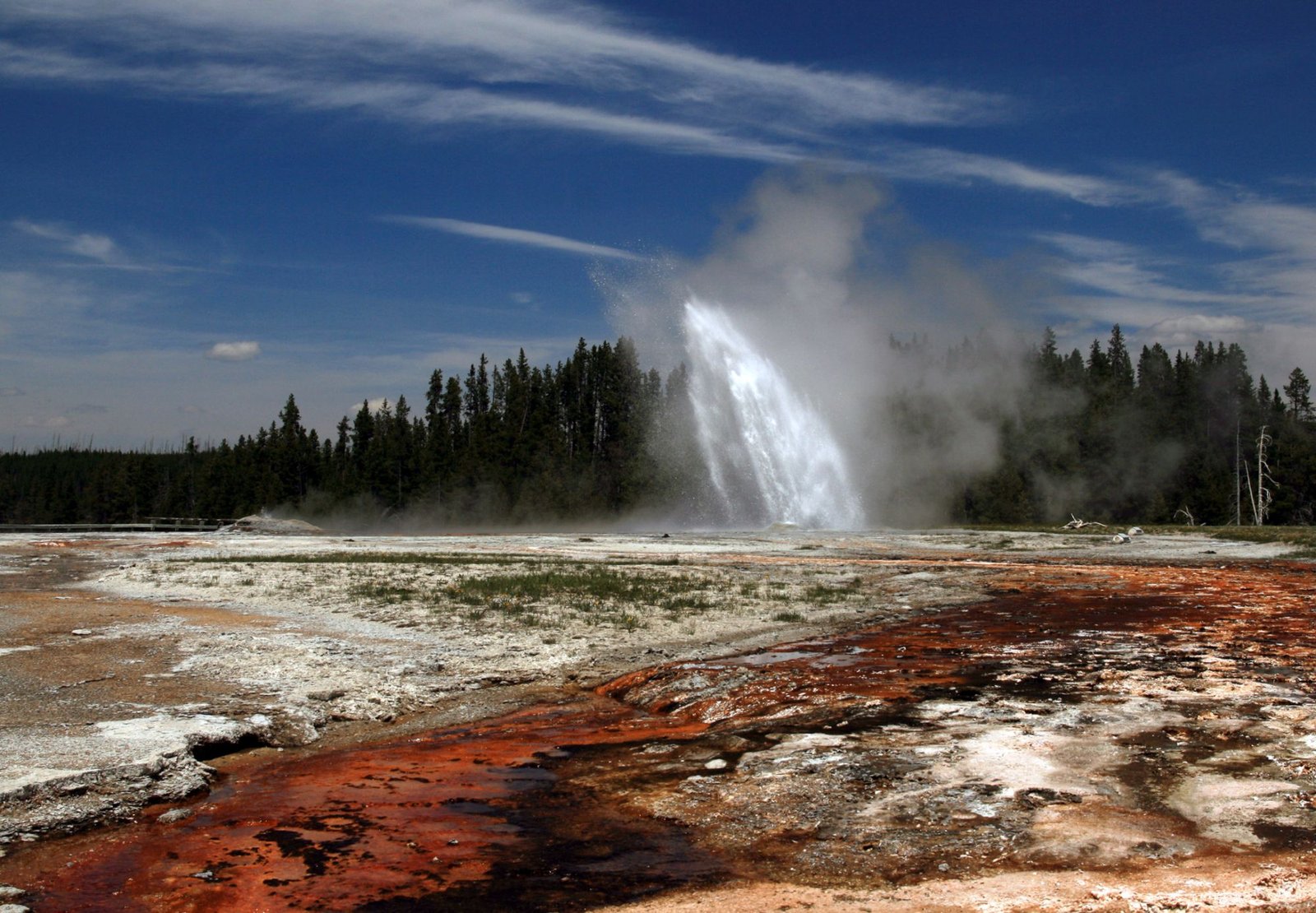Yellowstone National Park experiences extreme cold temperatures, especially during winter months. Average winter lows can drop to 1°F (-17°C) in January, with record lows reaching a bone-chilling -66°F (-54°C). The park’s high elevation and geographic location contribute to its harsh winter climate, making it one of the coldest places in the continental United States during winter.
What Are the Average Winter Temperatures in Yellowstone?

Winter in Yellowstone National Park is characterized by frigid temperatures and heavy snowfall. Here’s a breakdown of the average temperatures during the winter months:
- December:
- Average high: 24°F (-4°C)
- Average low: 2°F (-17°C)
- January:
- Average high: 24°F (-4°C)
- Average low: 1°F (-17°C)
- February:
- Average high: 30°F (-1°C)
- Average low: 3°F (-16°C)
These temperatures can feel even colder due to wind chill factors, making proper winter gear essential for visitors.
What’s the Coldest Temperature Ever Recorded in Yellowstone?

The coldest temperature ever recorded in Yellowstone National Park was an astonishing -66°F (-54°C) in February 1933. This extreme low demonstrates the potential for dangerously cold conditions in the park during winter months.
How Does Elevation Affect Temperature in Yellowstone?
Elevation plays a significant role in Yellowstone’s temperature variations:
- Higher elevations: Generally colder temperatures
- Lower elevations: Slightly milder temperatures, but still cold
For every 1,000 feet increase in elevation, the temperature typically drops by about 3°F (1.7°C). With elevations ranging from 5,282 to 11,358 feet above sea level, temperature differences across the park can be substantial.
What Are the Temperature Fluctuations Throughout the Year?
Yellowstone experiences significant temperature fluctuations throughout the year:
| Season | Average High | Average Low |
|---|---|---|
| Winter | 24°F (-4°C) | 1°F (-17°C) |
| Spring | 50°F (10°C) | 25°F (-4°C) |
| Summer | 78°F (25°C) | 41°F (5°C) |
| Fall | 55°F (13°C) | 28°F (-2°C) |
While summers can be mild and pleasant, winters are long and harsh, with cold temperatures persisting well into spring.
How Does Cold Weather Impact Wildlife in Yellowstone?
The extreme cold in Yellowstone has a significant impact on the park’s wildlife:
- Adaptation: Many animals have developed thick fur coats and other adaptations to survive the cold.
- Migration: Some species, like certain birds, migrate to warmer areas during winter.
- Hibernation: Animals like bears enter a state of hibernation to conserve energy during the coldest months.
- Behavioral changes: Wildlife may alter their feeding patterns or seek shelter in thermal areas to stay warm.
What Precautions Should Visitors Take During Cold Weather?
When visiting Yellowstone during cold weather, it’s crucial to take the following precautions:
- Dress in layers, including thermal underwear, insulating mid-layers, and a waterproof outer layer
- Wear warm, waterproof boots
- Bring hand and foot warmers
- Stay hydrated, as cold air can be very dry
- Be aware of signs of hypothermia and frostbite
- Check weather forecasts and road conditions before traveling
- Carry emergency supplies in your vehicle
How Does Cold Weather Affect Park Operations?
The extreme cold in Yellowstone has several impacts on park operations:
- Road closures: Many roads close to regular vehicles during winter due to snow and ice.
- Limited access: Visitors must use snowcoaches or snowmobiles to access much of the park in winter.
- Facility closures: Some lodges, campgrounds, and visitor centers close during the coldest months.
- Altered activities: Winter activities like cross-country skiing and snowshoeing become popular.
- Increased safety measures: Park staff must take extra precautions to ensure visitor and employee safety in cold conditions.
What Unique Experiences Does the Cold Weather Offer in Yellowstone?
Despite the challenges, Yellowstone’s cold weather creates unique experiences:
- Viewing steam rising from hot springs against a snowy backdrop
- Watching wildlife in their winter habitats
- Seeing frozen waterfalls and ice-covered landscapes
- Experiencing the park with fewer crowds
- Participating in winter-specific activities like snowmobiling and cross-country skiing
How Is Climate Change Affecting Cold Temperatures in Yellowstone?
Climate change is impacting Yellowstone’s cold temperatures in several ways:
- Warmer winters: Overall, winters are becoming milder, with fewer extremely cold days.
- Shorter cold seasons: The duration of cold periods is decreasing.
- Changes in snowpack: Less snow accumulation and earlier spring melts are being observed.
- Ecosystem shifts: Warmer temperatures are affecting plant and animal species adapted to cold climates.
These changes could have long-term effects on the park’s ecosystems and the experiences of future visitors.
In conclusion, Yellowstone National Park experiences extremely cold temperatures, particularly during winter months. With average lows dropping to 1°F (-17°C) and record lows reaching -66°F (-54°C), it’s one of the coldest places in the continental United States. This harsh climate shapes the park’s ecosystems, wildlife behaviors, and visitor experiences, making Yellowstone a unique and challenging environment to explore.
References:
1. https://www.yellowstonepark.com/park/weather-seasons/average-yellowstone-weather-season/
2. https://www.yellowstone.org/experience/visitor-information/yellowstone-weather/
3. https://www.nps.gov/yell/planyourvisit/weather.htm

